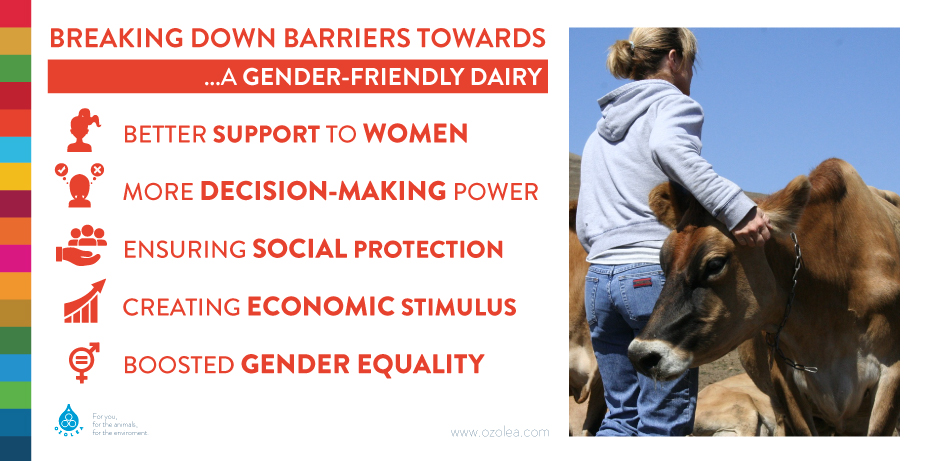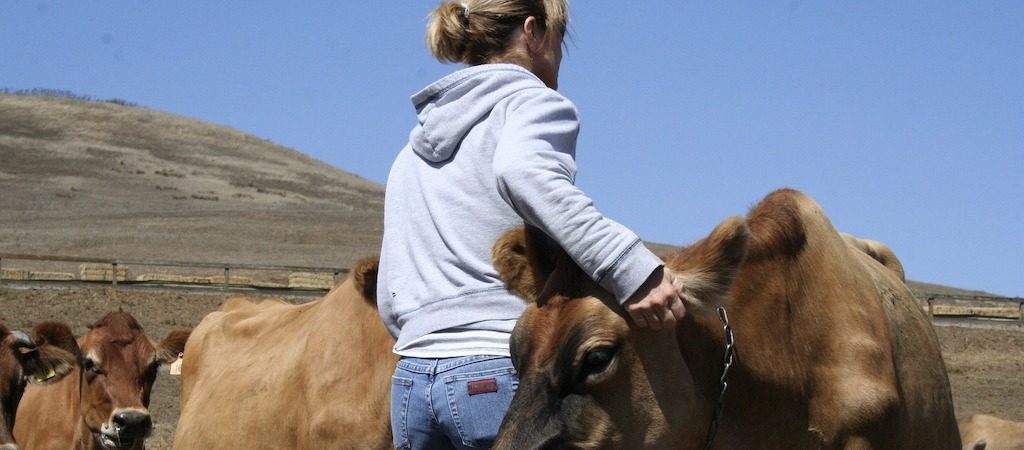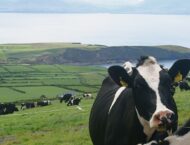Sustainability is not “just” an environmental issue. Sustainability is also a relevant socio-economic aspect.
This word was clearly defined by the United Nations Brundtalnd Commission as “meeting the needs of the present without compromising the ability of future generations to meet their own needs”.
Sustainability goes far beyond the climate issue. For this reason, and for the definition of sustainability itself, gender equality matters.
According to the FAO1, about 290 million women and girls count on livestock production to generate income. For example, revenues may stem mainly from milk processing. Others from wool and other animal fibres, which requires processing as well.
A large contribution to rural women’s economic empowerment comes from livestock ownership, since it provides a source for immediate household necessities.
However, these women are forced to work under constraints that limit their potential productivity and hinder their capacity to fully contribute to their families’ food and nutrition security and to the growth of the livestock sector as a whole.
As such, gender inequalities constitute limit to the potential behind livestock production, which still needs a helping hand to perform at higher levels. Indeed, the reasons are climate change, rural–urban migration, limited investments, and gender inequalities.
As highlighted in the FAO’s document1, there is an increasing amount of evidence that gender inequalities implicate high costs on societies at global level, limiting the “productive potential of economies and their overall development”.
Nonetheless, where there are challenges, there are also opportunities.
Livestock production deserves attention rather than accusations. This is because it can give the world2 safe and nutritious food3 through a circular approach4. Moreover, it has a multiplier effect for other agricultural and non-agricultural sectors5 linked to livestock. And much more.
One wide gender gap (and challenge) to be filled and still limiting women’s capacity of improving livestock productivity is access to innovation and technology6.
Livestock production cannot be sustainable without gender equality. For this reason, one of the goals of OZOLEA’s SSafeMILK project is supporting gender equality. Since the majority of rural workers are located in developing countries and many of them are women, they need innovative and affordable tools also to achieve better results and to value their efforts.

1 Transforming the livestock sector through the Sustainable Development Goals.
http://www.fao.org/3/CA1201EN/ca1201en.pdf
2 Save your milk, don’t waste it: the world must be nourished.
https://www.ozolea.it/save-your-milk-dont-waste-it-the-world-must-be-nourished/
3 Prevention and control in livestock productions mean more food safety, more food security and good health.
4 The circular nature of dairy farming.
https://www.ozolea.it/the-circular-nature-of-dairy-farming/
5 Livestock husbandry has a multiplier effect on other business activities.
https://www.ozolea.it/livestock-husbandry-has-a-multiplier-effect-on-other-business-activities/
6 FAO. 2018. Gender and ICTs: Mainstreaming gender in the use of information and communication technologies (ICTs) for agriculture and rural development, by Sophie Treinen and Alice Van der Elstraeten. Rome, Italy.



